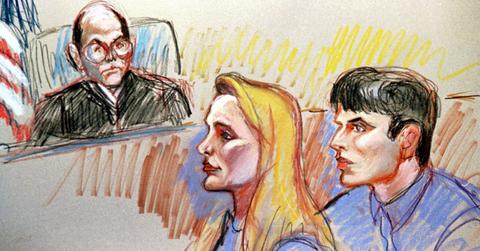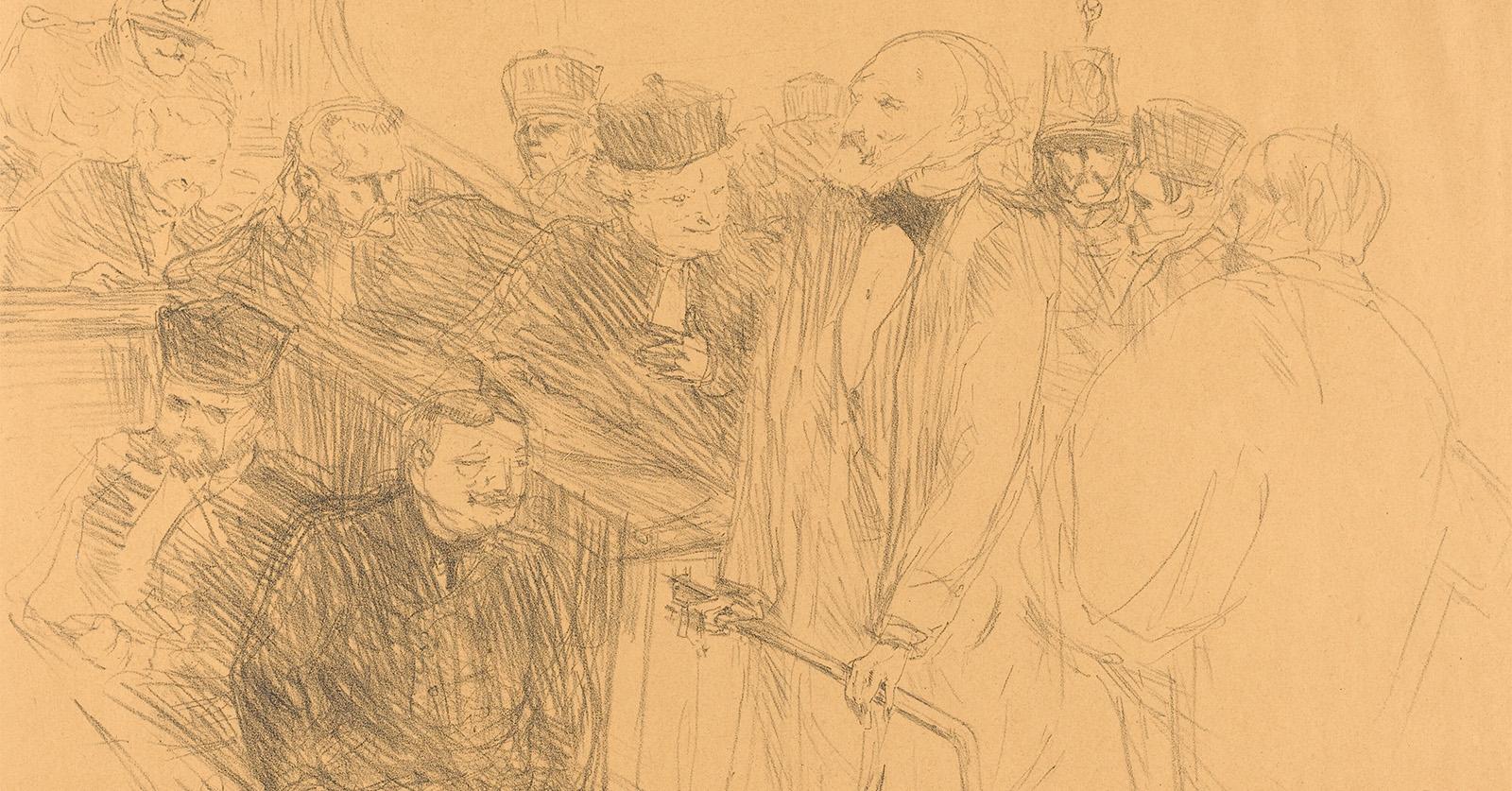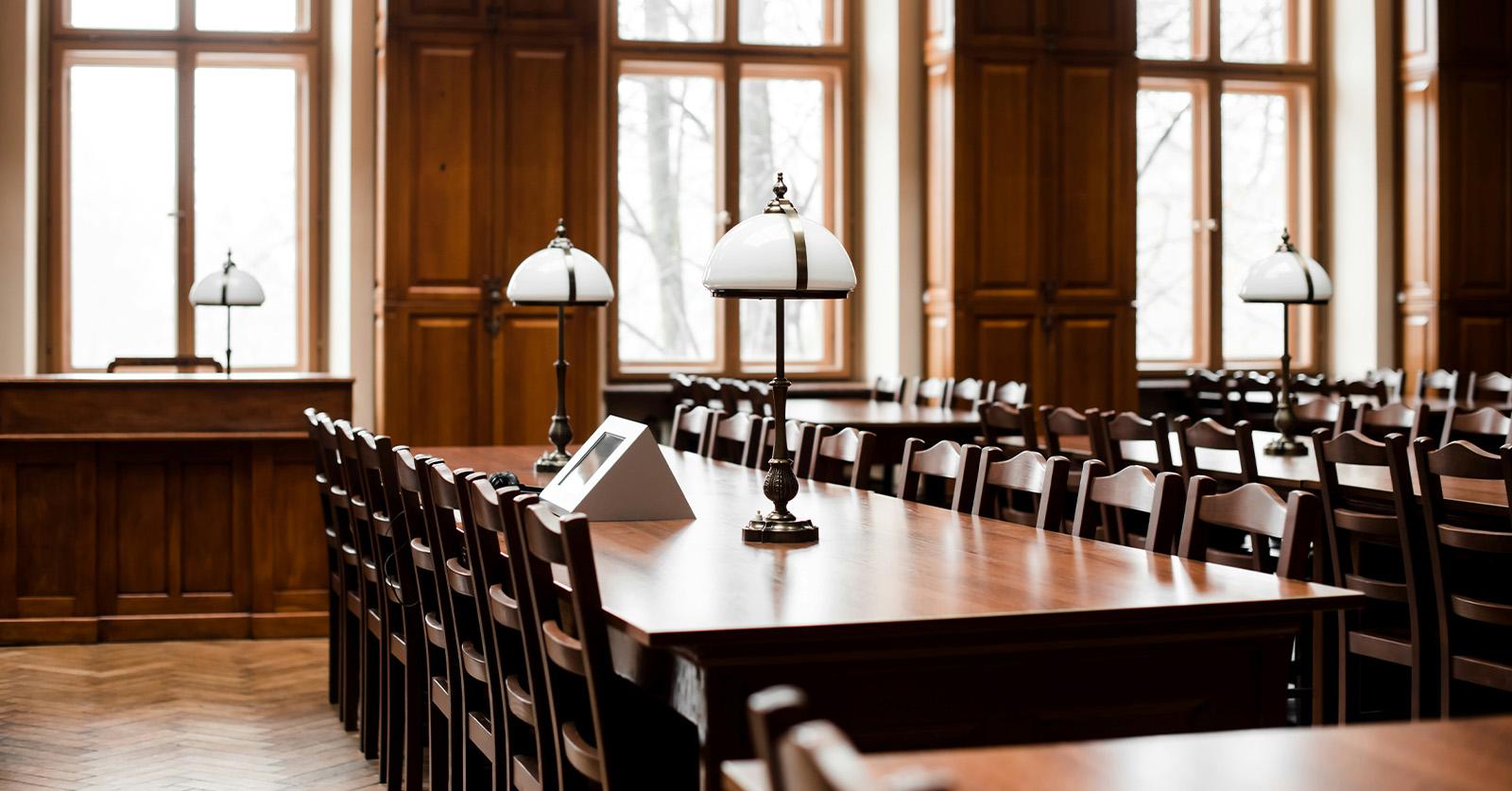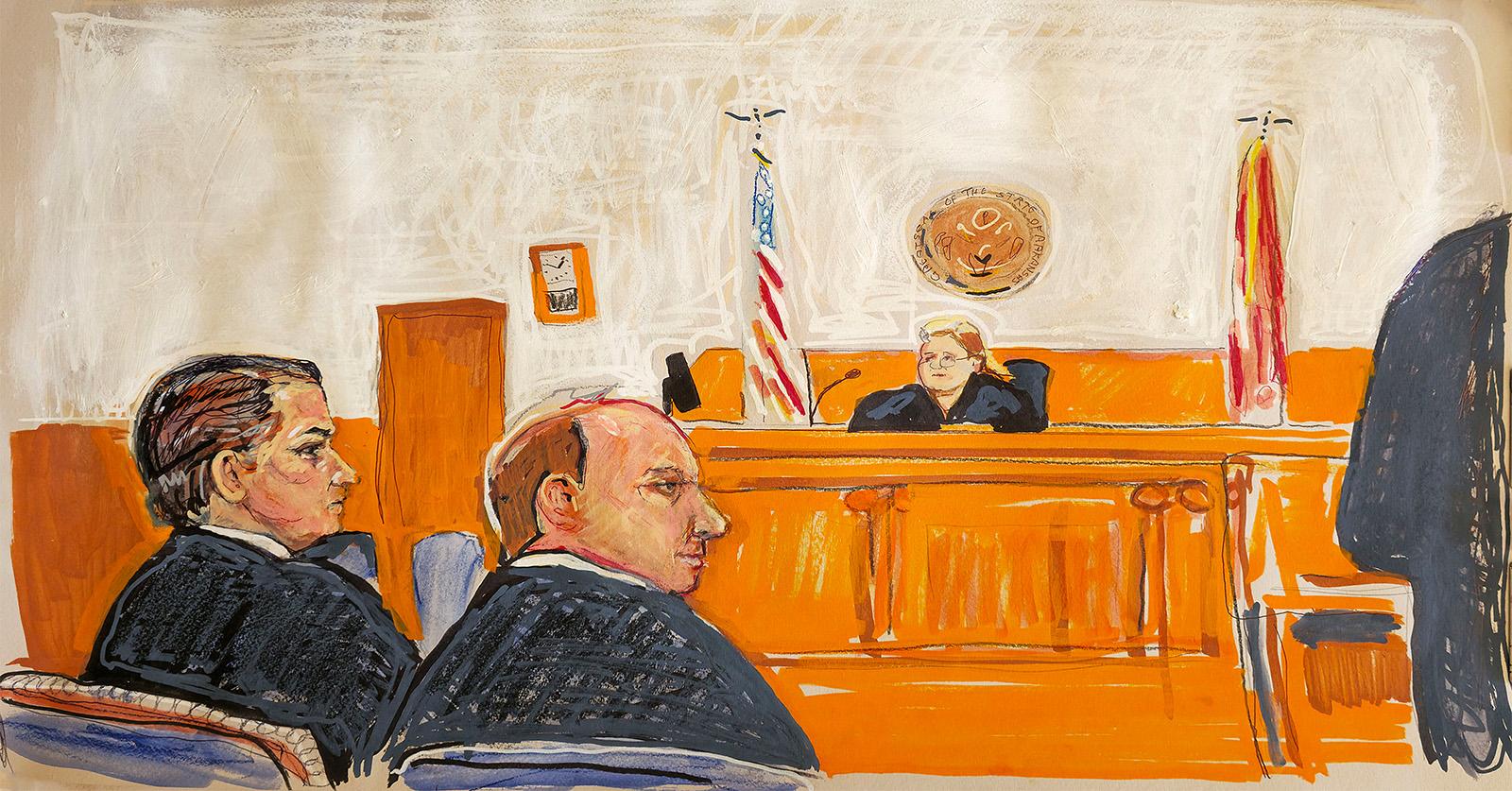Courtroom Sketches Seem so Outdated — Why Are They Still a Thing?
They're still considered an important part of the judicial process.
Published Sept. 24 2024, 9:49 a.m. ET

If you're one to follow court proceedings, from Donald Trump to the Menendez brothers, you've likely thought to yourself at some point, "Why do they still hire courtroom sketch artists?"
The practice, which was implemented back in a time before cameras and other recording devices even existed, seems totally archaic, and yet it still persists today.
Though courtroom sketches seem like something that should've faded into obsolescence with the invention of a more practical and accurate method of capturing visual imagery, we just can't seem to let them go. Here's why.

Why are courtroom sketches still a thing?
While 47 out of 50 states in the U.S. allow cameras inside of courtrooms — Indiana, Mississippi, and South Dakota being the odd ones out — courtroom sketch artists are still employed by the news media all over the country. Why? Well, a few reasons.
First, the artists are often able to capture the "essence" of a court proceeding in a way that cameras and other recording devices can't.
In an Artsy interview with award-winning courtroom sketch artist Bill Robles, he explained why the practice is so important: "An artist is surely not a camera, but by the same token an artist can do what the camera cannot do. You synthesize a lot of different things going on that can’t possibly be in a photograph."
"The camera flashes what happened that second, whereas with an artist, it’s more about [the person's] attitude," he said.

Artists can fit several subjects into a sketch that maybe wouldn't fit into a single photograph, they can combine multiple key moments to tell a complete story, and they can draw around obstructive objects like columns, podiums, and more.
Another major reason why courtroom sketch artists are still used today is because many court proceedings don't allow cameras. Even in states where cameras and audio recording devices are legally allowed, they may not be permitted — or wanted — in some instances.
Famed courtroom artist Mona Shafer Edwards explained that, after the highly televised O.J. Simpson trial, many people had second thoughts about allowing cameras into the courts: “It was a circus.”
"Witnesses underwent complete makeovers between the preliminary hearings and the actual trial," per Artsy, "with housekeepers entering the courts 'completely done up.' Lawyers started positioning their lecterns for optimal camera angles."

It's also possible that, if cameras are present in the room, some folks might refuse to testify or share certain information for fear of the moment being immortalized on video. With sketches, you don't have that problem — plus, the artists can be a lot more inconspicuous than a camera crew, meaning that someone on the stand won't constantly be worrying about how they look or what they say.
While most sketch artists now use digital methods, like iPads, to capture their drawings, there are still some instances when they're forced to revert back to the good, old colored pencil and paper method.
And though technology is ever-evolving, it's unlikely that we'll see the end of the courtroom sketch anytime soon.